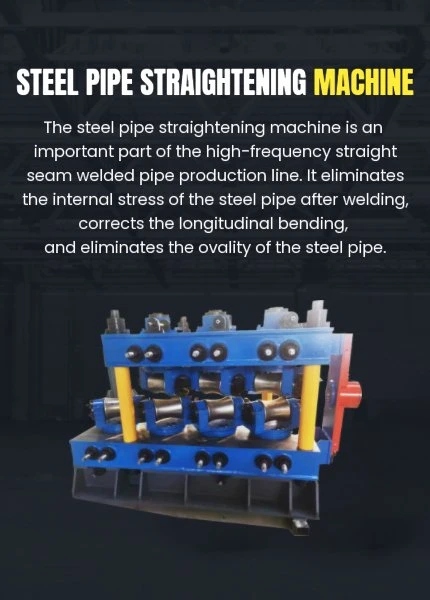Roller Straightener System for Precision Metal Processing and Sheet Flattening Solutions
The Roller Straightener Machine Enhancing Precision and Efficiency in Metal Processing
In the ever-evolving landscape of manufacturing and metal processing, technology plays a pivotal role in enhancing both quality and efficiency. Among the array of advanced machinery, the roller straightener machine stands out as a crucial tool designed to ensure the smooth and precise finishing of metal strips, sheets, and other materials. This article delves into the functionality, benefits, and applications of the roller straightener machine.
Understanding the Roller Straightener Machine
A roller straightener machine is designed to remove twists, bends, and waves from metal products, allowing them to achieve a flat and uniform shape. The machine operates through a series of rollers arranged in a specific configuration. As the metal passes through these rollers, they exert pressure on various points along the material, strategically aligning the metal’s structure. This controlled process not only straightens the metal but also reinforces its strength, leading to enhanced material performance.
The construction of a typical roller straightener consists of several components, including the feeding mechanism, rollers made from high-grade steel, and an adjustment system to control the spacing and alignment of the rollers. The precision and capability of this machine are paramount, as even slight misalignments can lead to significant defects in the final product.
Benefits of Using a Roller Straightener Machine
1. Improved Precision One of the primary advantages of the roller straightener machine is the precision it brings to metal processing. By ensuring that metal sheets and strips are uniformly straightened, manufacturers can achieve tighter tolerances in their products, which is critical in industries where accuracy is paramount.
2. Increased Efficiency Automating the straightening process significantly reduces labor costs and the time required for manual corrections. This efficiency translates to faster production rates, allowing manufacturers to meet high demands without compromising quality.
roller straightener machine

3. Enhanced Material Quality Straightened metal products exhibit better performance in subsequent manufacturing processes. They are less likely to warp or deform during bending, welding, or further processing, thereby improving the overall quality of the final structures or components.
4. Versatility Roller straightener machines are versatile and can be adapted for various materials, including steel, aluminum, and other alloys. This adaptability makes them indispensable in various sectors such as automotive, aerospace, construction, and metal fabrication.
Applications in Industry
Roller straightener machines are widely used across different industries, primarily due to their benefits. In the automotive industry, for instance, they are essential for preparing metal parts that require exact specifications for safety and performance. Similarly, in the construction sector, straightened metal sheets are critical for high-quality building materials that endure harsh environmental conditions.
In the aerospace industry, where precision can have significant safety implications, the use of roller straightening technology ensures that components meet strict regulatory standards. Furthermore, metal fabricators rely heavily on straightened materials to produce components that fit together seamlessly, ensuring the integrity and functionality of the final product.
Conclusion
The roller straightener machine is a vital piece of machinery in modern metal processing. Its ability to enhance precision, improve efficiency, and elevate the quality of materials makes it invaluable across various industries. As technology continues to advance, we can expect further innovations in the design and capabilities of roller straightener machines, ensuring they remain at the forefront of manufacturing excellence. Whether for industrial applications or specialized crafting, the impact of this machine is profound, shaping the future of metal manufacturing.
-
High Frequency Straight Seam Welded Pipe Production Line|BzZhou Xinghua|Precision Welding&EfficiencyNewsJul.30,2025
-
High Frequency Straight Seam Welded Pipe Production Line - BzZhou Xinghua|Precision Engineering&EfficiencyNewsJul.30,2025
-
High-Frequency Straight Seam Welded Pipe Production Line-BzZhou Xinghua Machinery Equipment Manufacturing Co., LTD.NewsJul.30,2025
-
High-Frequency Straight Seam Welded Pipe Production Line-BzZhou Xinghua Machinery Equipment Manufacturing Co., LTD.|Precision Manufacturing, High EfficiencyNewsJul.30,2025
-
High Frequency Straight Seam Welded Pipe Production Line-BzZhou Xinghua Machinery Equipment Manufacturing Co., LTD.|Precision Steel Pipe Manufacturing&Industrial EfficiencyNewsJul.29,2025
-
High-Frequency Straight Seam Welded Pipe Production Line-BzZhou Xinghua Machinery Equipment Manufacturing Co., LTD.|Precision Steel Pipe Manufacturing&Industrial EfficiencyNewsJul.29,2025


